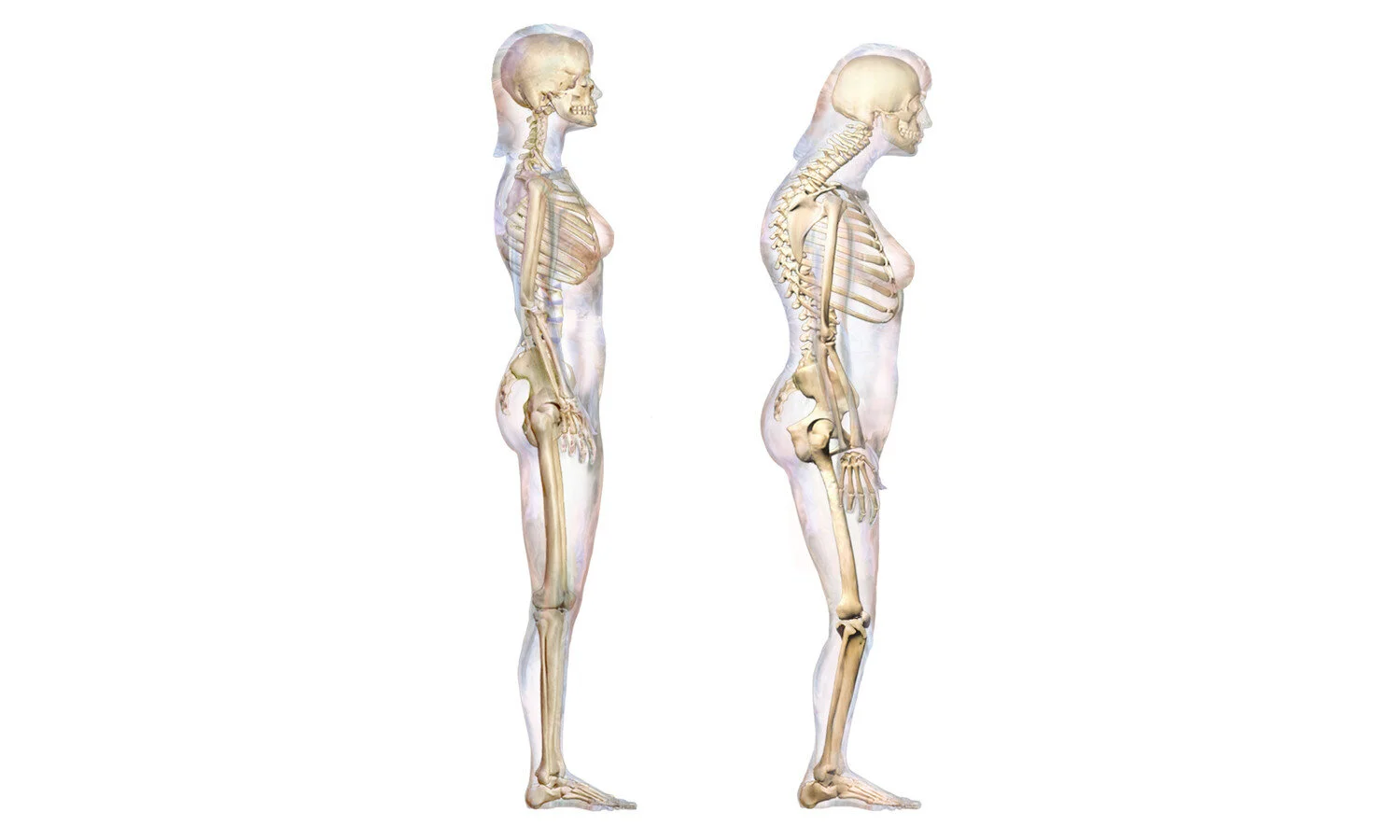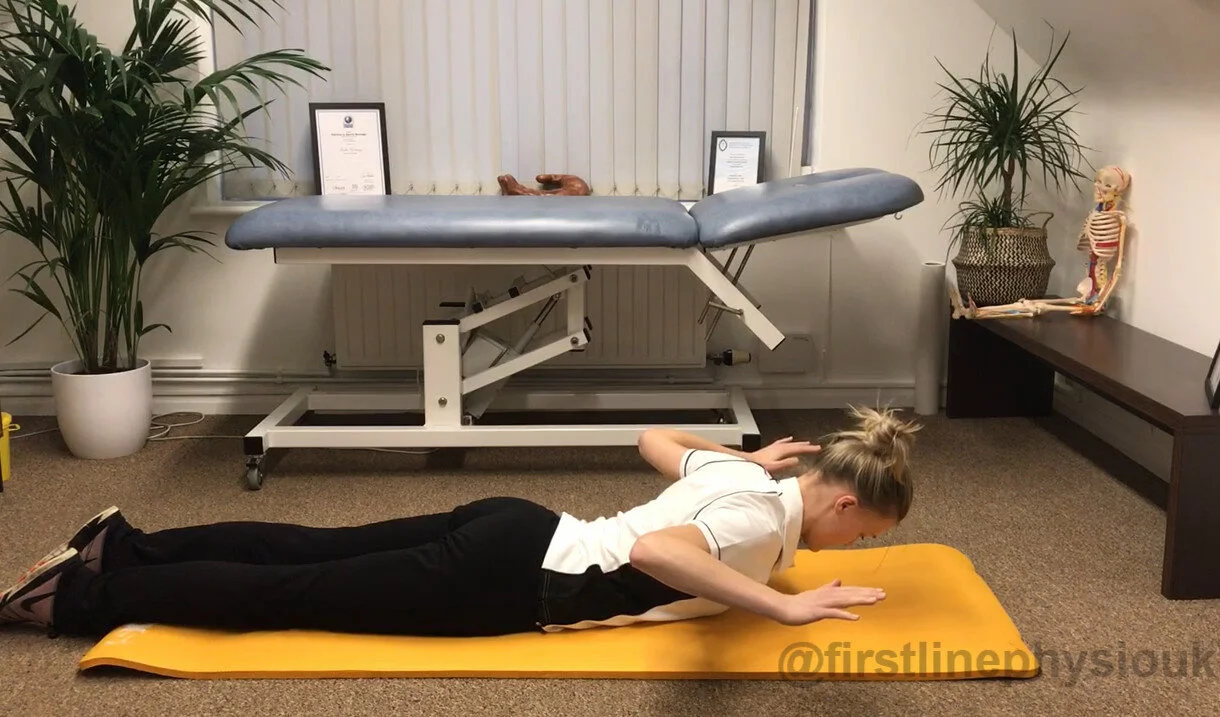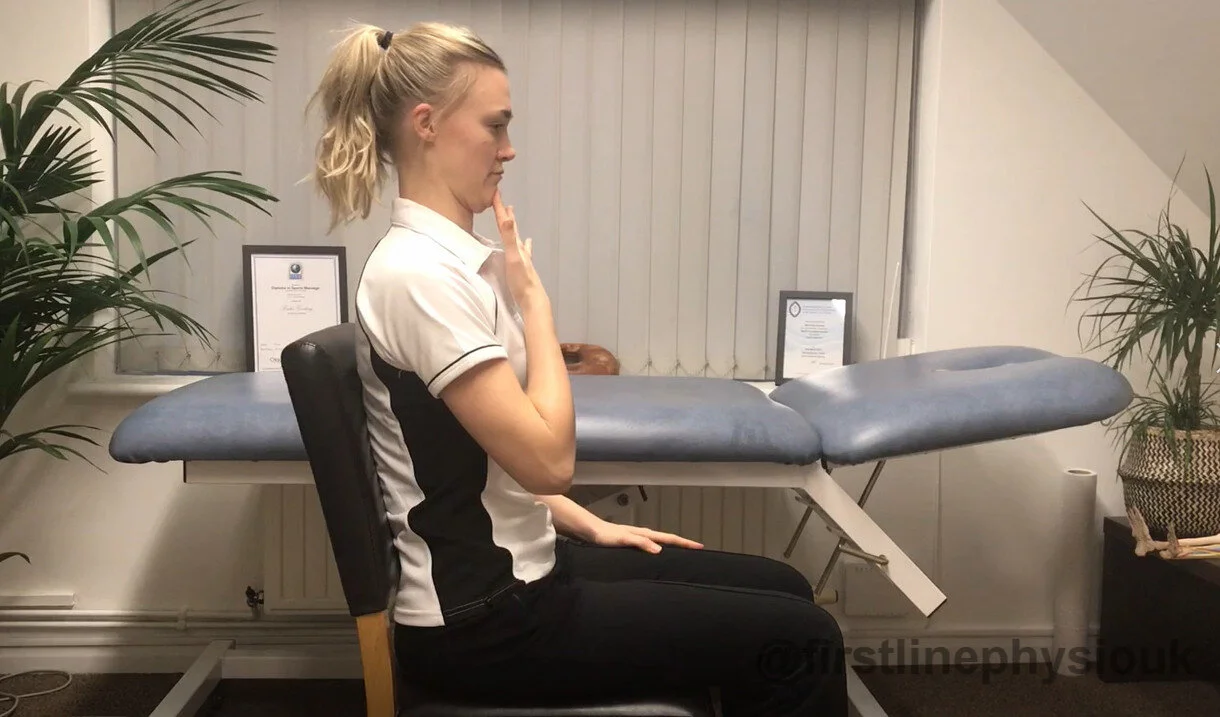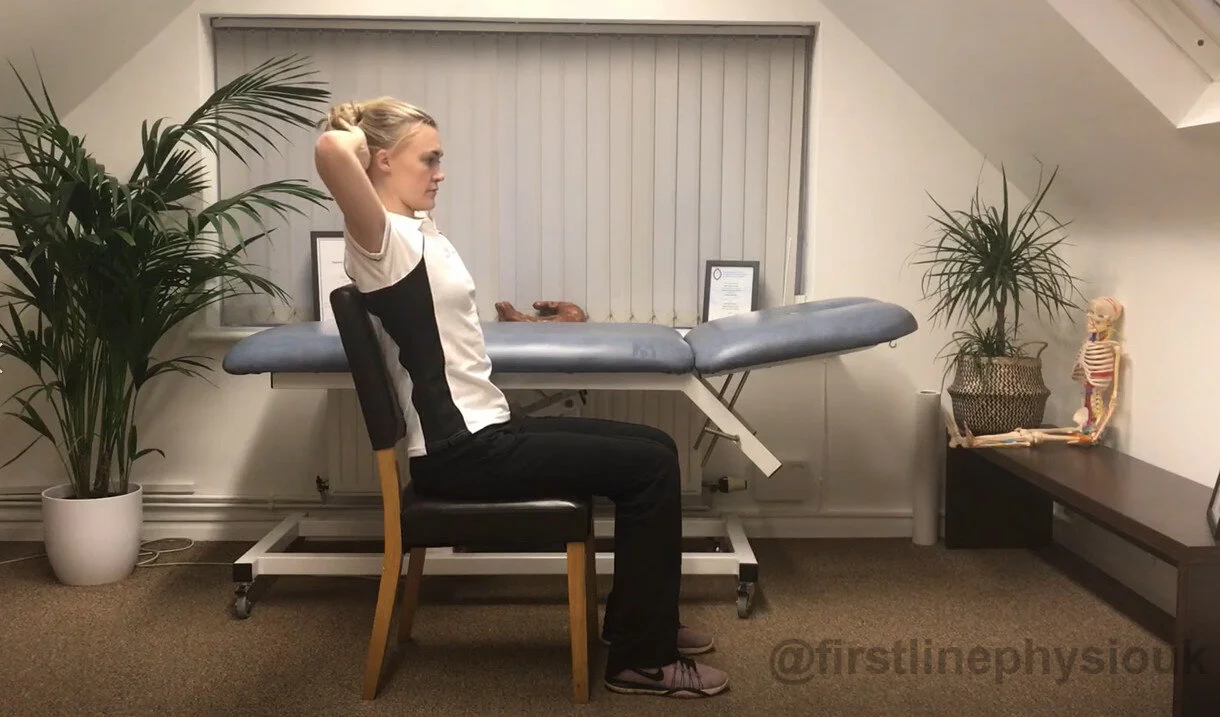How do I get rid of the hump on the back of my neck?
Many older people have a stooped appearance, with a ”hump” on the back of their necks. But this can also occur in younger adults. Here we discuss what this is and what you can do about it.
The hump you have noticed on the back of your neck is known as a ”Dowager’s hump”. It can also be called a "neck hump" or a buffalo hump". Medical professionals tend to refer to it as "kyphosis". This is a fairly common problem, and it is estimated that kyphosis affects between 20-40% of adults.
What causes a Dowager’s hump?
The most common cause for a Dowager’s hump is poor posture. Sitting in a flexed position (with your back bent forwards) for long periods of time is often the biggest culprit.
The joints between the vertebrae in the upper back become stiff, and the neck can develop a ”forward head posture" - where the chin protrudes forwards away from the neck, and the head is in a position forward of our shoulders.
Think about your lifestyle - driving, reading, using a computer and texting can all have a big impact on this.
People will sometimes notice a fatty pad behind their neck, around the hump. This develops at the base of your neck to protect your spine, in order to hold the weight of your head.
A medical illustration depicting degenerative kyphosis by Bruce Blaus is licensed under CC BY-SA 4.0.
The average head weighs around 10-12 pounds (4.5kg - 5.5kg). If the head is held forward, the neck must support the weight of this. For every inch that the head is held forward, an additional 10 pounds (4.5kg) is felt on the neck - so this doubles the load on the neck joints! It is for this reason that the body will attempt to create more strength by laying down more tissue around the neck to support this.
The good news is, there is a lot you can do about this problem, and you don’t need to live the pain that is associated with it.
Can physio help a Dowagers hump?
Depending on your age, the severity and the causes of your kyphosis, you can often improve this problem significantly through physiotherapy. Some causes of kyphosis can be more difficult to treat. These include:
Fractures of the vertebrae (for example wedge fracture with osteoporosis)
Degenerative disc disease
Scheurmann’s disease
These conditions can lead to structural changes in the spine, meaning that sometimes the actual shape of the vertebrae or disc changes.
Although physiotherapy cannot change the shape of these structures, it can improve stiffness, weakness and pain that is often associated. Speak to your physiotherapist if you have one of these conditions, as it is usually recommended to have a thorough assessment before starting on any treatment.
Physiotherapists can use hands on techniques to mobilise stiff joints in your spine, and release tightness in the muscles around this area. Exercises can strengthen weak muscles, improve flexibility in tight muscles, reduce spinal stiffness and improve your posture.
Strengthen spinal extensor muscles
Prone scapular squeezes
Lying on your front, face down.
Place your arms at 45 degrees to your side, and palms facing downwards. Squeeze your shoulder blades together as you draw your arms back.
You should feel a tightening of the muscles at the bottom of your shoulder blades.
Repeat 3 sets of 10 repetitions.
Neck retractions
Keeping your head straight (do not nod up or down), push your head forwards as far as it can go. Then slowly pull it back as far as it will go.
Sometimes it can be helpful to place your fingers on the front of your chin to help guide the movement.
Hold the position for 5 seconds, then relax.
Repeat 5 times
Reduce spinal stiffness
Thoracic Rotation
Lying on one side on the floor, with your knees bent and your arms both straight out in front of you on the floor.
Slowly bring your top arm over your body and rest it on the floor on the other side of your body. Keep your knees and your other arm on the other side of your body.
Hold for 20 seconds. Repeat 5 times on each side.
Thoracic extension
Sitting in a supported chair,
Bring your hands behind your head for support. Imagine you have a piece of string on your chest, and this is pulling your chest up to the ceiling.
Lift your chest up, and slowly extend your upper back over the chair.
Repeat 10 times.
Improve flexibility in tight muscles
Upper traps stretch
Slowly tilt your head to the right so that you move your right ear towards your shoulder. Make sure your shoulder stays relaxed and down. You will start to feel a stretch on the left of your neck.
If it feels comfortable to do so, bring your right arm over your head and gently pull your head a little further.
Hold for 30 seconds.
Complete 5 times, and then repeat to the left.
This is absolutely not written to substitute medical advice and it is always important to see a qualified health care professional for a formal diagnosis. If any of the exercises cause pain during or after the exercise, discontinue and consult a physiotherapist.
If you would like to get in touch please visit our contact page.








